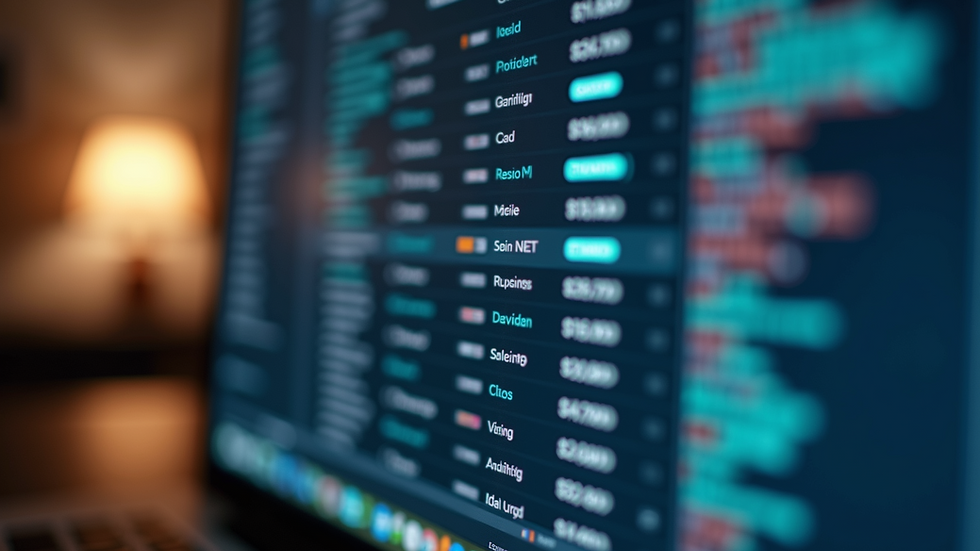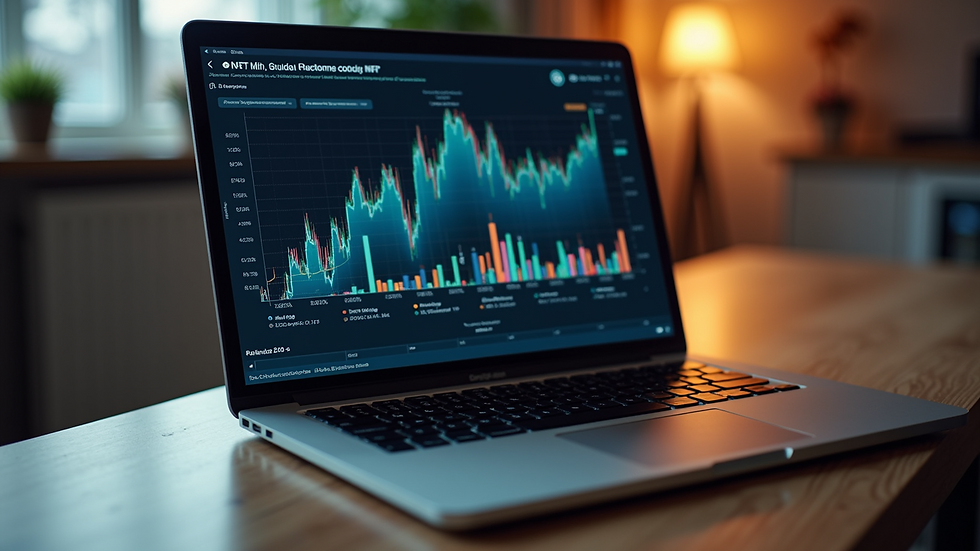Breaking Down the Components of Digital Creations
- madlab
- Aug 11
- 4 min read
Digital creations have transformed the way we express creativity and share art. Among these innovations, NFT art has emerged as a revolutionary concept, blending technology with artistic expression. Understanding the components that make up digital creations, especially in the NFT space, is essential for artists, collectors, and enthusiasts alike. This article breaks down the key elements of digital creations, focusing on NFT art, and offers practical insights to help you navigate this exciting world.
Understanding the Basics of NFT Art
NFT art stands for Non-Fungible Token art, a unique digital asset verified using blockchain technology. Unlike traditional digital files, NFTs are one-of-a-kind and cannot be duplicated, making them valuable collectibles. The core components of NFT art include:
Digital Artwork: This is the visual or multimedia content created by the artist. It can be anything from digital paintings, animations, music, or even virtual real estate.
Blockchain: The technology that certifies the authenticity and ownership of the NFT. Popular blockchains for NFTs include Ethereum, Binance Smart Chain, and Solana.
Smart Contracts: These are self-executing contracts with the terms of the agreement directly written into code. They manage the transfer and ownership of NFTs.
Metadata: Information about the NFT, such as the creator’s name, description, and properties of the artwork.
For example, a digital artist might create a vibrant digital painting and mint it as an NFT on the Ethereum blockchain. The smart contract ensures that when someone buys the NFT, the ownership is recorded and cannot be altered.

Key Elements to Consider in NFT Art Creation
Creating NFT art involves more than just digital creativity. Several technical and artistic factors contribute to the success and appeal of an NFT:
1. Artistic Quality and Originality
The uniqueness of the artwork is crucial. Originality attracts collectors and adds value. Artists should focus on creating pieces that stand out and tell a story.
2. File Format and Resolution
NFTs can be images, videos, or audio files. Common formats include JPEG, PNG, GIF, MP4, and MP3. High resolution ensures the artwork looks professional and appealing on various devices.
3. Size and Dimensions
The size of the digital file affects upload times and storage costs on the blockchain. Artists should optimize their files without compromising quality. For those interested in technical specifics, understanding nft artwork dimensions is essential to ensure compatibility with platforms and display devices.
4. Metadata and Description
Clear and detailed metadata helps buyers understand the artwork’s context and significance. Include the creation date, inspiration, and any special features.
5. Rarity and Editions
Deciding whether the NFT will be a single edition or part of a limited series impacts its scarcity and value. Limited editions often create more demand.
6. Platform Selection
Choosing the right marketplace (OpenSea, Rarible, Foundation) affects visibility and sales potential. Each platform has different fees, audience, and features.

How do I convert my artwork into NFT?
Converting your artwork into an NFT involves a process called "minting," which registers your digital file on the blockchain. Here’s a step-by-step guide:
Create Your Digital Art
Use your preferred software to design your artwork. Ensure it meets the technical requirements of the platform you plan to use.
Choose a Blockchain and Wallet
Select a blockchain that supports NFTs, such as Ethereum. Set up a digital wallet (MetaMask, Trust Wallet) to store your NFTs and cryptocurrency.
Select an NFT Marketplace
Pick a platform like OpenSea, Rarible, or Mintable. Each has its own minting process and fees.
Upload Your Artwork
Follow the platform’s instructions to upload your file. Add metadata, including title, description, and properties.
Mint the NFT
Confirm the transaction in your wallet to mint the NFT. This process may require paying a gas fee, which varies depending on the blockchain.
List for Sale
Set your price or auction terms. Promote your NFT through social media and communities to attract buyers.
By following these steps, artists can transform their digital creations into valuable NFTs, opening new opportunities for monetization and exposure.

Practical Tips for Enhancing Your NFT Art Presence
To succeed in the competitive NFT market, consider these actionable recommendations:
Engage with the Community: Join NFT forums, Discord groups, and social media channels to connect with collectors and other artists.
Tell Your Story: Share the inspiration behind your art. Authenticity resonates with buyers.
Optimize Your Profile: Use a professional profile picture, clear bio, and links to your portfolio.
Collaborate: Partner with other artists or brands to expand your reach.
Stay Updated: Keep up with trends, new platforms, and blockchain developments.
Protect Your Work: Use watermarks or previews to prevent unauthorized use before minting.
These strategies help build credibility and increase the chances of your NFT art gaining attention and value.
Exploring the Future of Digital Creations and NFT Art
The digital art landscape is evolving rapidly. NFTs have opened doors to new forms of creativity and ownership. Future trends to watch include:
Augmented Reality (AR) and Virtual Reality (VR): Integrating NFTs into immersive experiences.
Dynamic NFTs: Artworks that change based on external data or user interaction.
Cross-Chain NFTs: Interoperability between different blockchains for broader access.
Sustainability Efforts: Eco-friendly blockchains and carbon offset initiatives to reduce environmental impact.
Artists and collectors who stay informed and adaptable will thrive in this dynamic environment. Digital creations are no longer confined to screens; they are becoming interactive, evolving assets that redefine art ownership.
By understanding the components of digital creations and the nuances of NFT art, you can better appreciate this innovative art form and explore its potential. Whether you are an artist looking to mint your first NFT or a collector seeking unique digital assets, the world of NFT art offers exciting possibilities.























